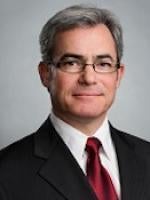1.DOJ False Claims Act Statistics for FY 2015
On December 3, 2015, the Department of Justice ("DOJ") released its annual update on the FY 2015 numbers regarding False Claims Act filings and recoveries during this past year (DOJ Stats FY2015). In the fiscal year ending September 30, 2015, the DOJ received in excess of $3.5 billion from settlements and judgments in civil cases alleging fraud and false claims against the government. This is the fourth consecutive year that the total recoveries have exceeded $3.5 billion from cases filed under the False Claims Act.
Fraud Recoveries Did Not Slow Down in FY 2015
Of the $3.5 billion recovered in FY 2015, $1.9 billion stemmed from the health care industry, while $1.1 billion came from payments under government contracts and $365 million came from housing and mortgage fraud.
Most of the claims filed under the False Claims Act are under the whistleblower provisions of the statute, or qui tam claims, allowing for individuals to file lawsuits on behalf of the government alleging that false claims were made against the government. In those qui tam cases, the government has the option of intervening and prosecuting the case or declining to intervene and allowing the whistleblower (also called the "relator") to pursue the claim on behalf of the government. In either event, if the government or the relator prevails, the relator receives an award of up to 30 percent of the recovery.
In FY 2015, qui tam lawsuits accounted for more than $2.9 billion of the $3.5 billion recovered. During that period, the pay out to the whistleblowers who raised the false claims and filed a qui tam complaint was $597 million - the highest annual amount ever paid to relators.
Record Setting Qui Tam Recoveries Where Government Declined to Intervene
632 qui tam lawsuits were filed at the federal level, in FY 2015. The 632 lawsuits represent a significant decline from the previous two years where 754 qui tam suits were filed in 2013 and 714 were filed in 2014.
But despite the sharp decrease in qui tam suits filed in FY 2015, recovery by relators filed in qui tam cases in which the government declined to intervene was at an all-time high, over $300 million. The previous highest payout to relators in which the government declined to intervene was $49 million in FY 2011. With these numbers on the rise, it appears that relators are continuing to pursue qui tam actions even when the government has declined to intervene.
What Does This Mean?
While some qui tam complaints do raise legitimate fraud claims, the provisions of the False Claims Act and the sometimes inconsistent interpretations of those provisions out of different jurisdictions have been allowing for the increased recoveries. It is more important than ever for companies to be aware of the potential for a qui tam claim to be filed and to learn how to best avoid having to face such a claim.
2. SCOTUS to Hear a False Claims Act Case in 2016
On December 4, just after the DOJ announced its FY 2015 numbers, the Supreme Court decided to grant certiorari in a qui tam case to address the scope of "falsity" under the False Claims Act. In United States, ex rel Escobar v. United Health Services, Inc., 780 F.3d 504 (1st Cir 2015), the First Circuit Appellate Court reviewed the question of whether a false statement made with regard to participation in a government program, but not an express condition of payment, can be the basis for a false claim under the Act. Under the theory of "implied certification liability," a party may be held liable under the False Claims Act where that party made an otherwise proper request for payment, but failed to adhere to a statute, regulation, or contract provision that was a precondition to payment. The "implied" liability aspect relates to the fact that defendant has made no express certification of compliance when it applies for payment.
Implied Certification Liability Actionable?
InEscobar, the relators are parents of a woman who died after being treated by unlicensed and unsupervised staff at a mental health services provider owned by defendant. After the relators discovered that the mental health counselors were not properly licensed pursuant to required Massachusetts regulations, they filed a false claims suit under an implied certification theory alleging that defendant's requests for payment reimbursement from the Massachusetts Medicaid agency implicitly communicated that it had complied with the necessary licensing regulations.
The district court dismissed the case, finding that the falsity, proper licensing, was a condition of defendant's participation in the government program, but that compliance with the licensing requirements was not an express condition of defendant receiving payment. The district court held that only failure to comply with a statutory or regulatory condition of payment could cause a claim for payment to be false under the False Claims Act.
On appeal, the First Circuit reversed, holding that the distinction between a condition of payment and condition of participation is not relevant for this analysis. The appellate court allowed the lawsuit to proceed because even though the defendant did not expressly represent that it had complied with the licensing requirements, it did implicitly communicate compliance with those requirements, "each time it submitted a claim."
Circuit Courts Are Split
The Supreme Court's review of Escobarshould settle a distinct split between the federal circuits on this issue. While the Fourth and D.C. Circuits are in agreement with the First Circuit's position on implied certification expressed in Escobar, a different view has come out of the Second, Third, Sixth, Ninth, Tenth and Eleventh Circuits, where implied certification has been applied, but only where compliance with the applicable statute contains an express prerequisite to payment. And the Seventh Circuit expanded the split in a recent decision when it seemingly rejected the concept altogether in United States v. Sanford-Brown, Ltd., 788 F.3d 696 (7th Cir. 2015).
What Will We learn?
As noted in the recent DOJ statistics above, qui tam recoveries even where the government declines to intervene, are rising fast. Legal concepts that expand the scope of a false claim, like the implied certification theory, will only help those recoveries continue to rise. The Supreme Court should provide helpful guidance when it determines whether this expansive approach to the definition of a false claim is appropriate for False Claims Act liability going forward. In the interim, consider meeting with experienced counsel to help with review of your company and its practices for protection against qui tam lawsuits as best you can.



 />i
/>i


